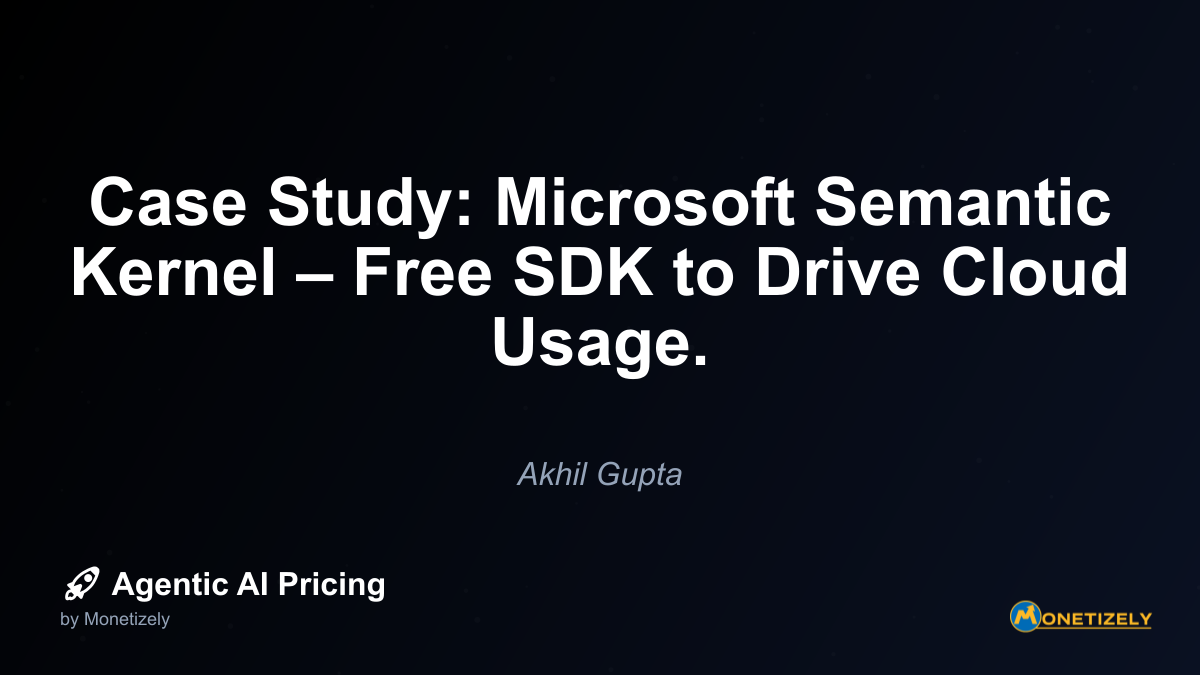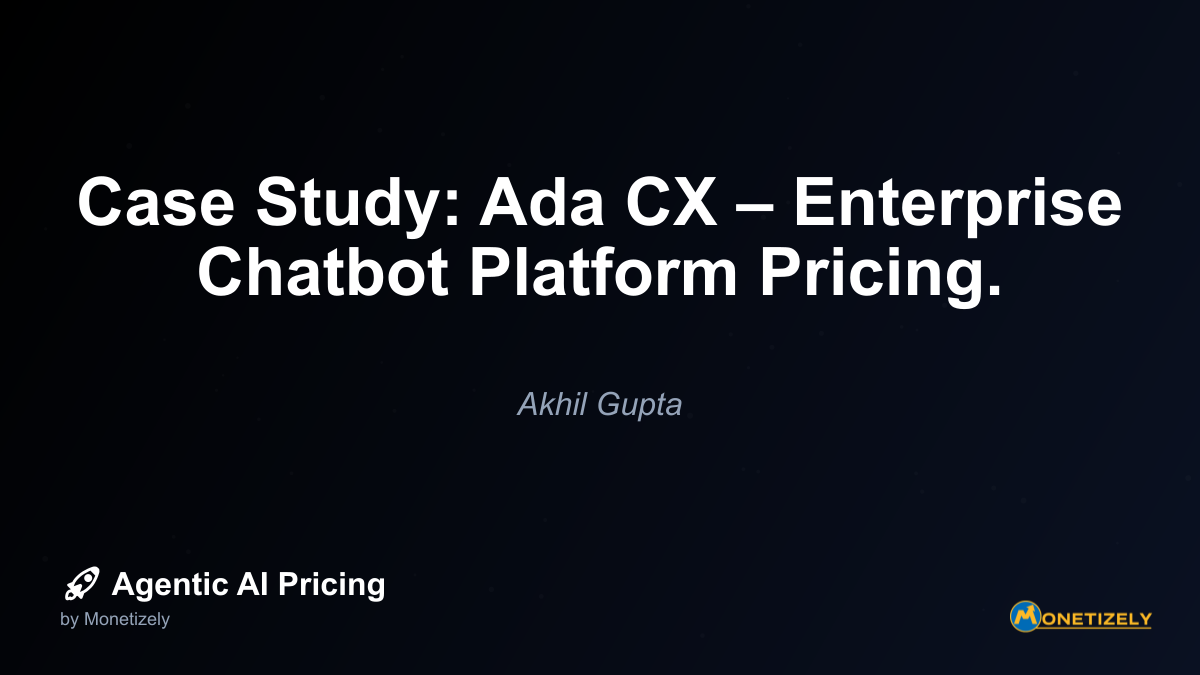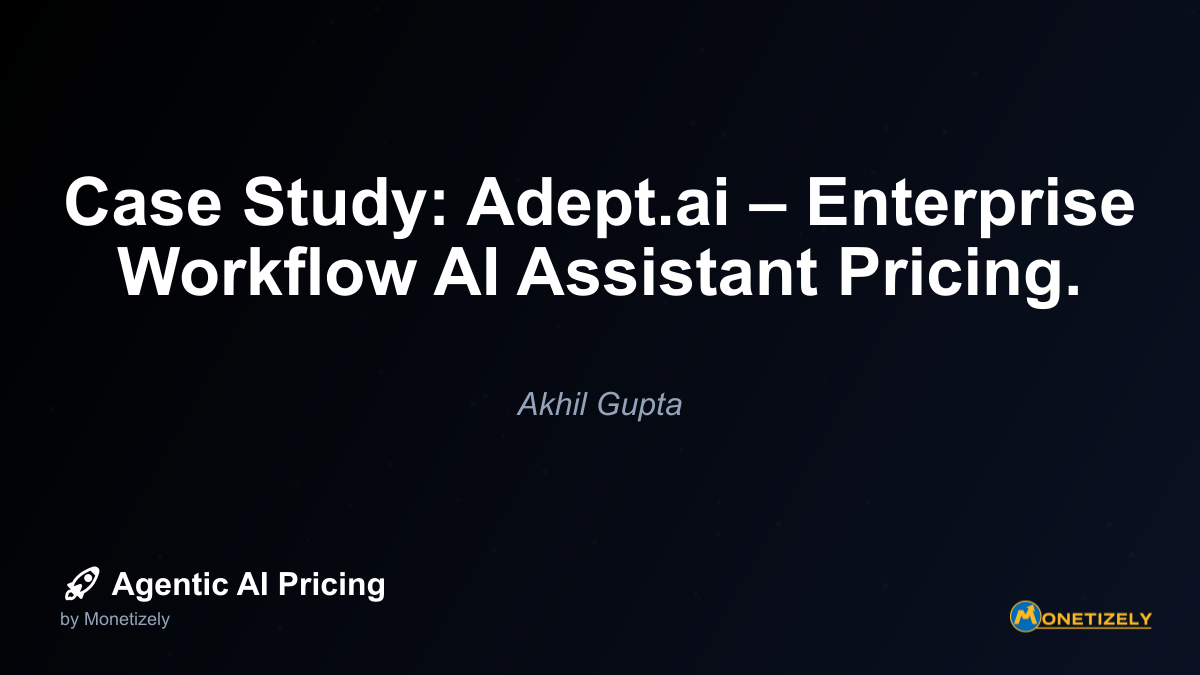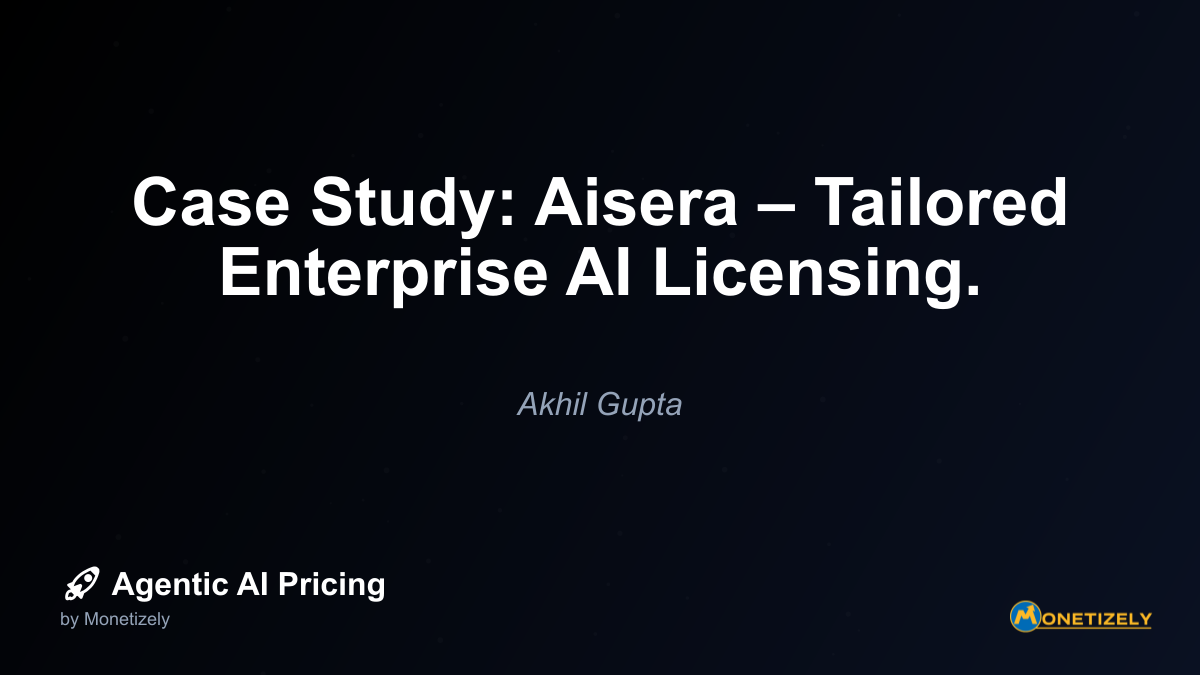· Akhil Gupta · Case Studies · 7 min read
Case Study: Microsoft Semantic Kernel – Free SDK to Drive Cloud Usage.
AI and SaaS Pricing Masterclass
Learn the art of strategic pricing directly from industry experts. Our comprehensive course provides frameworks and methodologies for optimizing your pricing strategy in the evolving AI landscape. Earn a professional certification that can be imported directly to your LinkedIn profile.

3. Embrace Open Source as a Strategic Pricing Tool
Microsoft’s decision to make Semantic Kernel open source rather than just free adds another dimension to its strategy. The open-source approach:
- Builds trust with developers who can examine the code
- Allows the community to contribute improvements and extensions
- Creates a network effect as developers share plugins and patterns
- Differentiates from competitors offering “black box” proprietary tools
Open source has evolved from a purely philosophical approach to software development into a sophisticated business strategy for AI companies. By strategically opening certain components while monetizing others, companies can accelerate adoption while maintaining strong revenue streams.
Navigating the decision between open-source and proprietary AI models requires careful consideration of your business objectives, target market, and competitive landscape.
Microsoft’s Implementation Strategy for Semantic Kernel
Microsoft’s rollout of Semantic Kernel demonstrates several best practices for implementing an indirect monetization strategy:
Comprehensive Documentation and Examples
Microsoft invested heavily in creating detailed documentation, sample applications, and tutorials for Semantic Kernel. This reduces the friction for developers to adopt the tool and accelerates their path to building applications that consume Azure services.
The quality of these educational resources directly impacts the conversion rate from SDK downloads to actual cloud service consumption. By making it easier for developers to succeed quickly, Microsoft increases the likelihood they’ll build production applications that generate ongoing revenue.
Integration with Popular Development Environments
Semantic Kernel is designed to work seamlessly with popular development environments and frameworks that Microsoft’s target developers already use. This includes:
- Visual Studio and VS Code integration
- .NET ecosystem compatibility
- Python package management via pip
- GitHub repository templates and actions
These integrations reduce adoption barriers by allowing developers to use Semantic Kernel within their existing workflows rather than requiring them to learn entirely new tools or processes.
Strategic Community Engagement
Microsoft maintains an active presence in developer communities where Semantic Kernel users gather, including:
- GitHub discussions and issue tracking
- Developer-focused social media channels
- Conference presentations and workshops
- Technical advocacy through Microsoft’s developer relations team
This engagement serves both to support existing users (increasing retention) and to showcase success stories that attract new developers to the ecosystem.
Competitive Analysis: Alternative Approaches
Microsoft’s approach with Semantic Kernel can be contrasted with alternative strategies from other AI ecosystem players:
OpenAI’s API-First Approach
Unlike Microsoft, OpenAI has focused primarily on providing AI capabilities directly through APIs rather than offering developer frameworks. Their monetization occurs at the model access layer rather than the infrastructure layer.
This approach:
- Generates direct revenue from API usage
- Provides less guidance on application architecture
- Creates less lock-in to specific cloud infrastructure
- Offers fewer opportunities for ecosystem expansion
Hugging Face’s Community Platform Strategy
Hugging Face has pursued a community platform strategy, creating a hub for sharing models while monetizing through enterprise features and compute services.
Their approach:
- Leverages network effects from community contributions
- Monetizes primarily through enterprise features and support
- Creates less direct infrastructure consumption
- Focuses on model discovery rather than application development
Google’s Vertically Integrated Strategy
Google has pursued a more vertically integrated approach with tools like Vertex AI, bundling development frameworks with model access and infrastructure.
Their strategy:
- Bundles multiple layers of the AI stack together
- Focuses on enterprise adoption rather than individual developers
- Offers fewer free components
- Creates stronger but more explicit lock-in
Each of these approaches has merits depending on a company’s market position, existing assets, and strategic objectives. Microsoft’s approach with Semantic Kernel is particularly well-suited to a company with a strong existing cloud infrastructure business.
Implementation Challenges and Considerations
While Microsoft’s strategy with Semantic Kernel demonstrates the potential of indirect monetization, implementing such an approach comes with challenges:
Balancing Open and Closed Components
Determining which components to make free and open source versus which to keep proprietary requires careful analysis. Companies must identify:
- Which components provide strategic differentiation
- Which layers generate the most direct value
- Where in the stack lock-in is most effective
- Which elements benefit most from community contributions
This balance will vary based on a company’s specific market position and business model.
Measuring Success Beyond Direct Revenue
Traditional software pricing metrics focus on direct revenue generation. With indirect monetization strategies like Microsoft’s, companies need new metrics to evaluate success:
- Developer adoption and engagement metrics
- Conversion rates from free tool users to paid service consumers
- Attribution of infrastructure revenue to specific developer tools
- Lifetime value of developers who enter through free tools
These metrics require more sophisticated tracking and attribution systems than traditional software sales models.
Managing Internal Organizational Tensions
Indirect monetization strategies often create organizational tensions, particularly in companies with traditional software backgrounds. Teams responsible for the free components may struggle to demonstrate their value when revenue appears on different balance sheets.
Microsoft has addressed this by:
- Aligning incentives across product teams
- Creating shared metrics that capture ecosystem value
- Establishing clear attribution models for revenue
- Communicating the strategic importance of developer tools
Organizations implementing similar strategies should proactively address these organizational challenges to prevent internal resistance.
Finding the right balance between free offerings and paid features is critical for sustainable AI business models that drive both adoption and revenue.
Future Evolution of Microsoft’s Strategy
Microsoft’s approach with Semantic Kernel provides insights into the likely future evolution of AI pricing strategies:
Expanding the Free Layer
As the AI ecosystem matures, we can expect Microsoft to continue expanding the capabilities available in the free layer. This might include:
- More sophisticated planning and reasoning capabilities
- Enhanced memory and knowledge management features
- Additional connectors to various AI services
- More comprehensive plugin ecosystems
By continuously enhancing the free offerings, Microsoft ensures that developers remain engaged with their ecosystem even as competitors emerge with alternative tools.
Introducing Enterprise Features
While keeping the core SDK free, Microsoft may introduce enterprise-focused features with direct monetization, such as:
- Advanced security and compliance capabilities
- Team collaboration and governance tools
- Enterprise support and service level agreements
- Specialized industry-specific plugins and templates
This tiered approach maintains the developer adoption benefits of free tools while creating opportunities for direct revenue from enterprise customers with specific needs.
Deeper Integration with Paid Services
We can expect Microsoft to continue deepening the integration between Semantic Kernel and their paid services, potentially including:
- More sophisticated Azure OpenAI Service features accessible only through the SDK
- Optimized performance for applications built with Semantic Kernel
- Special pricing or quota advantages for Semantic Kernel users
- Exclusive early access to new capabilities for developers in the ecosystem
These integrations strengthen the value proposition of using both the free SDK and the paid services together.
Conclusion: The Strategic Value of “Free” in AI Pricing
Microsoft’s approach with Semantic Kernel demonstrates that in the AI era, “free” is not merely an absence of price—it’s a sophisticated strategic tool for ecosystem expansion and indirect monetization. By providing developers with powerful, free tools that drive consumption of paid infrastructure services, Microsoft has created a virtuous cycle that benefits both developers and their own bottom line.
For companies developing AI technologies, the key lessons include:
Think holistically about monetization: Consider your entire technology stack and identify which layers drive the most value through direct versus indirect monetization.
Invest in developer experience: The quality of documentation, examples, and integration can dramatically impact the conversion rate from free tool adoption to paid service consumption.
Measure ecosystem value: Develop sophisticated metrics that capture the full value of free offerings in driving ecosystem growth and paid service adoption.
Balance open and closed components: Strategically determine which components benefit from being open source versus proprietary based on your specific business objectives.
As AI continues to transform software development, we can expect to see more companies adopting variations of Microsoft’s approach—using free, open-source components to drive adoption while monetizing the infrastructure and specialized services that power the resulting applications.
The companies that will thrive in this new landscape will be those that understand that in AI pricing, the path to revenue doesn’t always involve charging for every component. Sometimes, the most profitable approach is to give away valuable tools that drive consumption of your broader ecosystem.
Co-Founder & COO
Akhil is an Engineering leader with over 16+ years of experience in building, managing and scaling web-scale, high throughput enterprise applications and teams. He has worked with and led technology teams at FabAlley, BuildSupply and Healthians. He is a graduate from Delhi College of Engineering and UC Berkeley certified CTO.
Pricing Strategy Audit
Let our experts analyze your current pricing strategy and identify opportunities for improvement. Our data-driven assessment will help you unlock untapped revenue potential and optimize your AI pricing approach.




